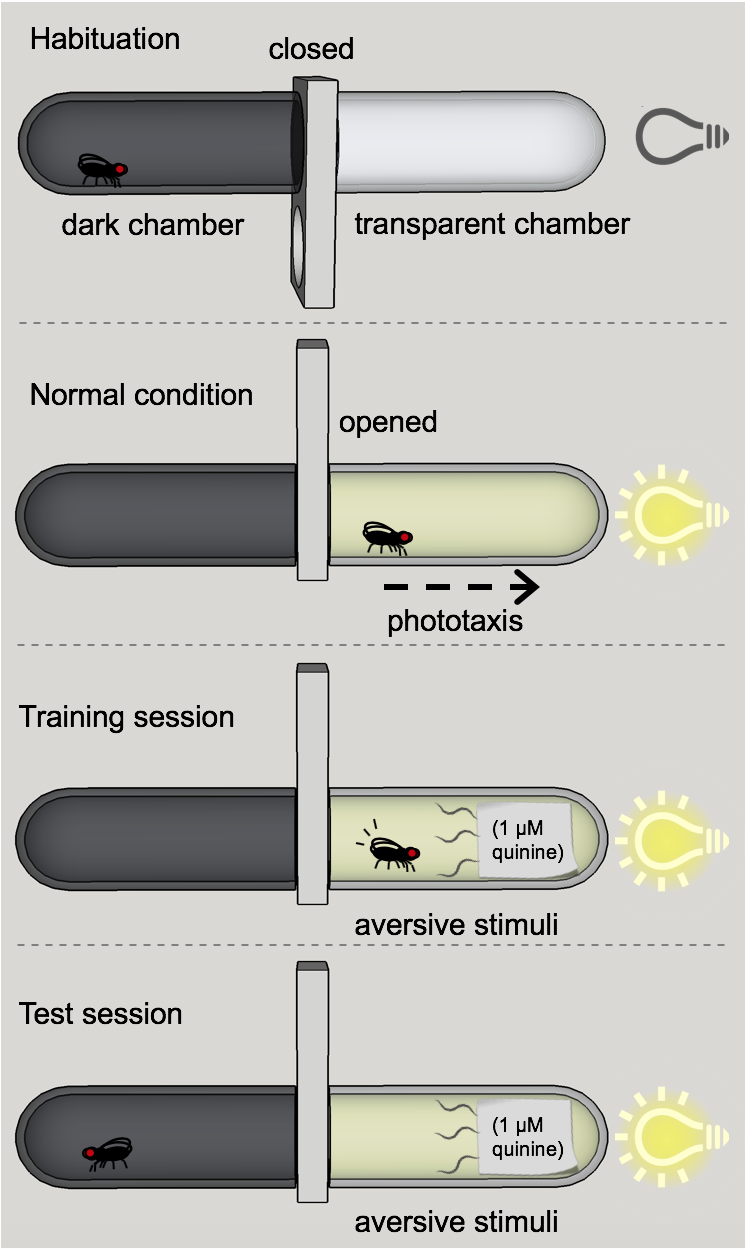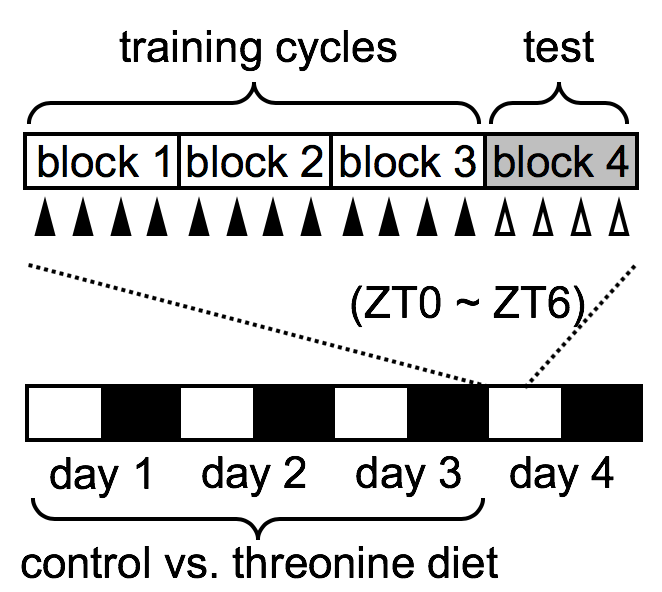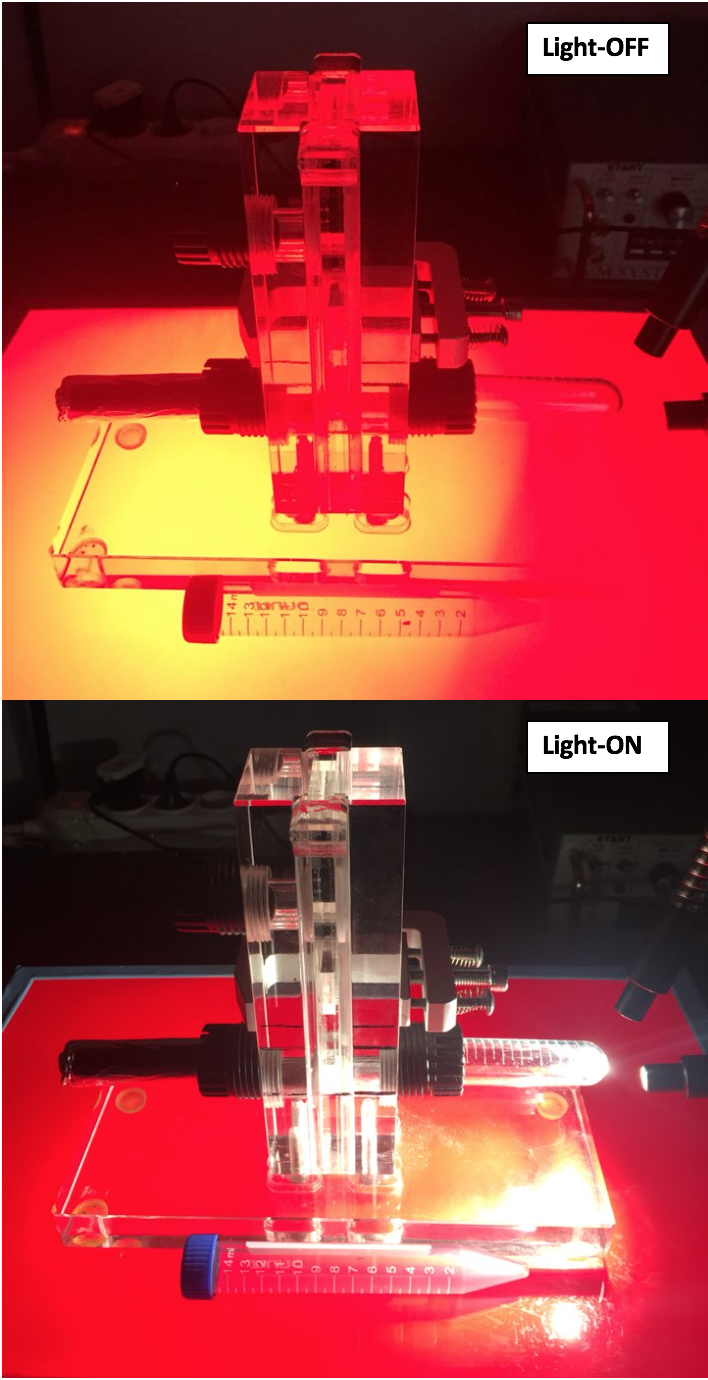Aversive Phototaxic Suppression in Drosophila
by Yoonhee Ki, Lim Lab at UNIST
[Ki and Lim (2019) Elife 8:e40593]
All the assays are performed on the custom-made red-light box in the dark room. Disposable culture tubes are used as chambers and occasionally replaced with fresh tubes. For the dark chamber, wrap the disposable tube with aluminum foil.
For the aversive stimuli, dilute the quinine solution from 1 M stock stored at -20 °C on a test day. Place a 3M paper (approx. 3 x 4 cm) in a transparent tube and soak the paper with 180 uL of 1 uM quinine hydrochloride solution (Sigma). Replace quinine soaked 3M paper between animals.
Custom-made red-light box: Red LED chips are placed on the bottom of the box. The red-colored acrylic plate was used to cover the top of the box.
0. Pre-entrain flies with either control or threonine-containing behavior food for four LD cycles.
(ZT 0-6 of day 4)
1. Connect a quinine-containing transparent chamber to the main body of a T-maze.
2. Place a single fly in the dark chamber of a T-maze without anesthesia and assemble the chamber while the gate is closed.
3. Habituate fly for 1 minute with the light-off condition.
4. Gently slide up a block in the center to open the gate and gradually turn on the light source at the same time.
5. Wait for 20 seconds to see if fly passes through the gate from the dark side to the light side.
6. Gently tap down the apparatus to put fly into the dark chamber back again regardless of the fly’s choice.
7. After 40 seconds, go back to “4”.
8. Repeat 4-7 for 16 times.
To make sure that the experimental animal shows phototaxis, set threshold such as “discard the fly which did not move to the light chamber at the first trial (or within first 3 trials) for further analysis”.
A performance index was calculated for each fly by the percentage of ‘non-pass’ in the last session (four trials/session).
A. Illustration of a general concept of the “Aversive Phototaxic Suppression” assay.

B. Schematics of experimental schedule and procedure.

C. Photos of the apparatus with light-OFF (up) and light-On (down) conditions.





